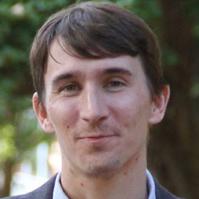College Board Forum 2023
Campus Economics: Constructive Approaches to Challenging Decisions
Sandy Baum has spent her career studying the finances of higher education, and she thinks the language of economics can drive more honest discussion about resources and tradeoffs. “What we’re trying to do is have these conversations in a more informed way so everyone can participate and people can respect each other’s views,” Baum said.
Faculty and campus leaders are often uncomfortable translating the high-minded goals of higher education into the language of budgets and costs. But being explicit about opportunity costs, marginal benefits, and other classic economic concepts can help put everyone on the same page and clarify the debate about competing priorities.
Baum and her husband, the economist Michael McPherson, make that case in the book Campus Economics: How Economic Thinking Can Help Improve College and University Decisions. “The book is designed to help people on campus have better conversations about all kinds of challenging issues,” she said.
Efficiency and marginal costs shouldn’t be uncomfortable concepts in higher education, Baum said, because it’s all about focusing resources where they can do the most good. “How do we generate revenues in service of our mission?” she said. “You cannot offer a high-quality education if you don’t have the revenues to do it.” Economic language can be especially useful in helping board members and policymakers, who often hail from the business world, better understand campus operations and priorities.
Cheryl Horsey, the chief enrollment officer of Bryn Mawr College, gave the example of reworking the school’s financial aid policy to support more low-income students and improve enrollment yield. Being open about the costs and tradeoffs of that decision, acknowledging that a more generous aid policy is an expensive investment, gave Horsey the confidence to move forward. “For me and the team, it was about mission and adhering to the mission,” she said. “Is this decision sustainable? Can we do this and not have to renege on it? Those are some of the decisions we had to think about.”
Horsey said using economic data and financial analysis has made it easier to offer transparency about pricing to students and families. It has also helped build support for financial aid by making it clear to campus leaders and board members how aid and scholarships are linked to institutional mission.
Not every campus decision can be reduced to dollars and cents, Baum acknowledged. Most universities are mission-driven nonprofits, with faculty and staff committed to academic values and broader social principles. But using the language of economics to frame decisions can help make it easier to weigh competing values.
“If you want the wherewithal to appropriately address social issues … you need the resources required to support people in their quest for social justice,” Baum said.
